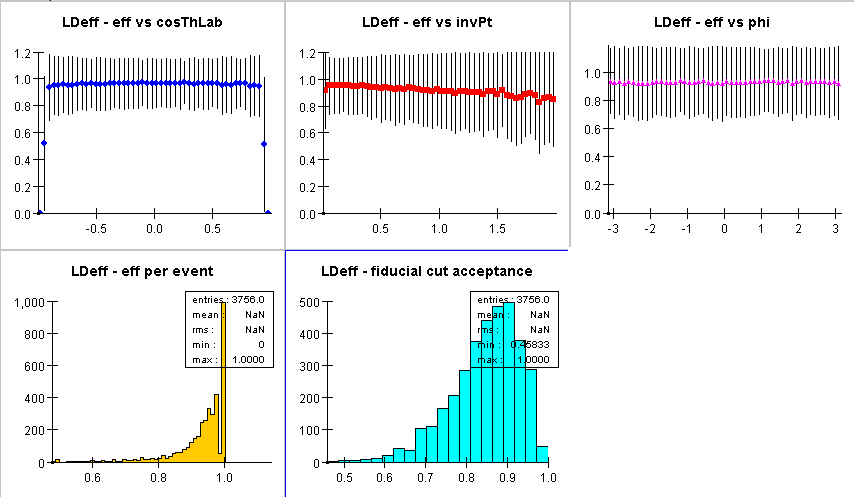Track
efficiency analysis example
This version is distributed
on the Snowmass LCD software CD.
Introduction
This example gives a brief introduction on
how to calculate track efficiencies using full reconstruction (hep.lcd.recon.tracking.TrackReco).
The example features:
-
use of TrackReco()
-
smearing of track hits with hep.lcd.util.smear
classes to study effects of different resolutions
-
filtering MCParticles using Predicate and
Filter
Setup
-
Copy the following source files to a directory
of your choice on your hard drive:
-
Be sure to set your CLASSPATH (inside JAS)
to the directory you have chosen.
-
Compile the main TrackEfficiencyDriver.java
inside JAS.
(This should compile all other classes
as well.)
-
Load your favorite fully simulated dataset.
-
Run and view the histograms.
(Alternatively, you can copy TrackEffSuite.jar
to your selected directory and unpack the archive with jar xvf
TrackEffSuite.jar. Then continue with step 2.)
Example histograms
Here are some example histograms using panpy-ZH-500-010301-LD-sim.sio
as data input file.

The fun starts
Now you are ready for the fun. Please
have a look at the comments in the different java source files. It
should be obvious how to e.g. change hit resolutions in MySmearDriver.java
or how to modify the reference MCParticle selection in FsFiducialVolLD.java.
Some tips:
-
MySmearDriver is set up so that it can hold
different hit resolution parameter sets for different detector types, which
are selectable as constructor arguments. (This scheme should be easily
extendable.)
-
FsFiducialVolLD is set up such that it makes
sense to create different predicates as copies of FsFiducialVolLD.java
to hold different MCParticle selections. The predicate to be used
is then easily exchanged by simply changing the name in the Filter() statement
in TrackEfficiencyDriver.
Have fun!
Contact
Please feel free to
contact me:
Wolfgang
Walkowiak (walkowia@scipp.ucsc.edu)
Last update on 06/22/01 by Wolfgang
Walkowiak

